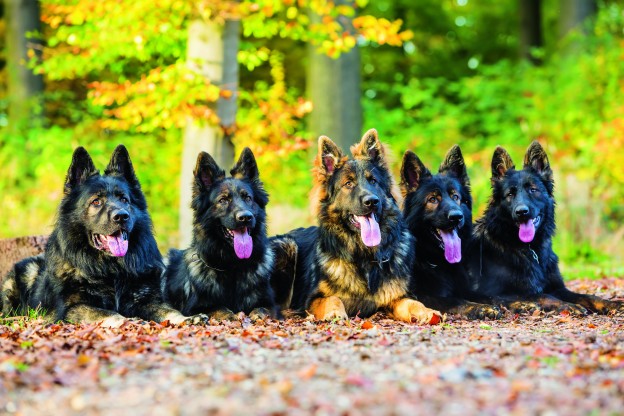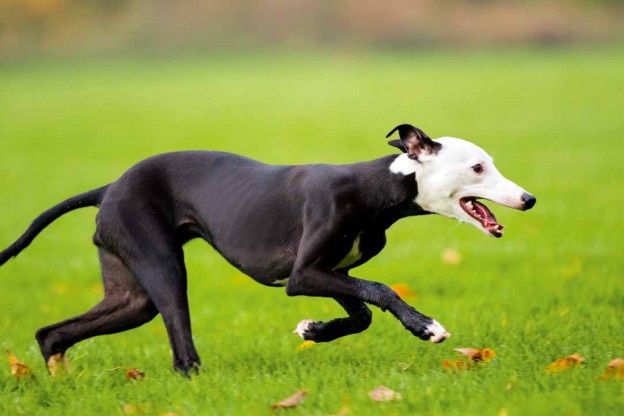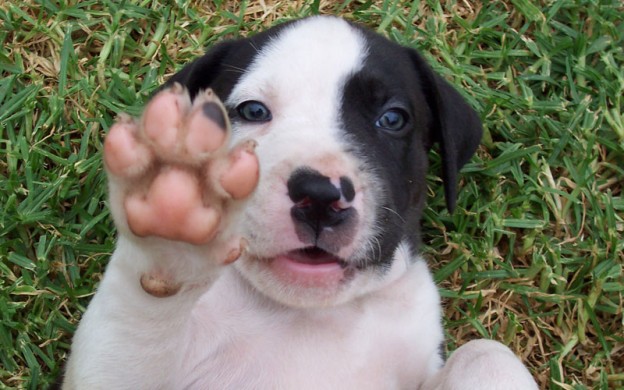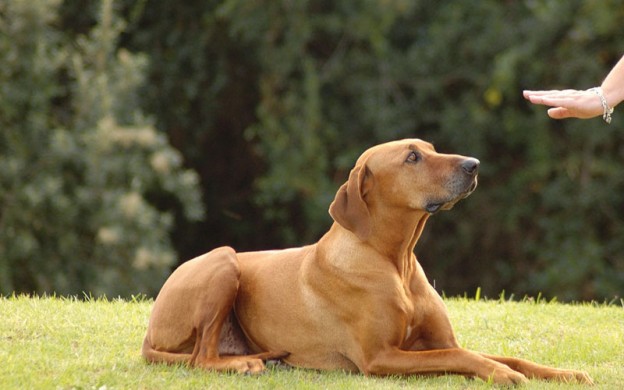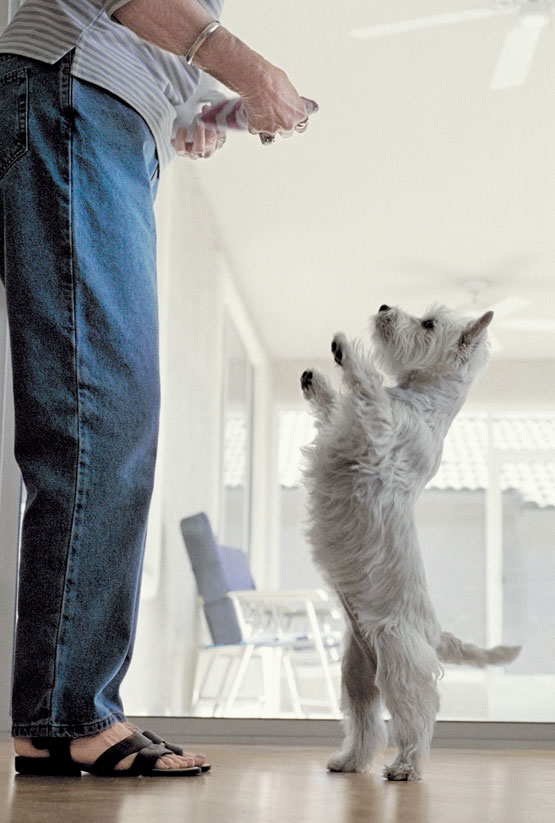
Dog trainer Karin Larsen Bridge explains how to stop your dog from jumping when meeting and greeting.
It is natural for dogs to greet family and friends with enthusiastic licks to the face, and because our faces are high up, a bit of jumping is soon added to the meet-and-greet ritual.
Crouching down to a puppys level is one short-term answer that allows your puppy to be rewarded for friendly, sociable behaviour without rewarding the jumping up. However, crouching low may not always be convenient, and a dog that continues to jump up into adulthood can become not only a nuisance but also a danger. Every dog therefore needs to learn that the polite way to greet people is with a sit.
1. Plan
You need to decide on the exact greeting behaviour you expect from your dog, both when you arrive home and when visitors arrive. Are you happy if your dog simply keeps all four feet on the ground or would you prefer him to sit? May the dog greet you at the door or in the kitchen? Is he to wait for a release word or is he free to move around as long as hes not jumping?
Once you have decided on the exact behaviour you want, you can start to train it, rewarding your dog for little steps in the right direction. Be specific, be consistent and be patient.
2. Teach
If you expect your dog to sit in a highly exciting environment such as a homecoming or visitors arriving, you must first teach a very reliable sit in a quiet, distraction-free area. To comply quickly with a sit cue anywhere, anytime, and anyplace is actually quite an advanced exercise and doesn’t happen overnight. Regularly reward your dog for sitting in a whole host of situations and contexts until compliance becomes a habit.
3. Rehearse
Dont wait until you are actually having dinner guests to start training the dog not to jump set up rehearsals on weekends or whenever you have time. Put your dog on a lead for added control, then ask other family members to ring the doorbell and practise lots of front-door greetings. Keep a jar of treats handy at the front door and reward your dog for either keeping four paws on the floor or for sitting.
If your dog is very lively, you may start by simply throwing small treats on the floor whenever your dog keeps its four on the floor. Treats should stop immediately if he starts to jump. Throwing treats on the floor keeps the dogs attention focused low down rather than up at faces. If you prefer to reward a sit, treat from the hand. After several repetitions, your dog will start to act more calmly at the front door in the hope of a reward.
4. Raise criteria
Too many dogs learn that they can jump, then sit, and still earn a reward. Soon you have taught a behaviour chain of jump-sit-cookie! This may be acceptable for the first few attempts at training, but then it is time to up the criteria if a jump comes before the sit, no cookies!
5. Talk dog
Dogs communicate mainly through body language. We can also use our actions and body language to help our dogs to understand quickly that jumping up is not desirable by:
Slowing down your own movements. The quieter you move and speak, the quieter your dog will become. Moving around quickly, pushing your dog away or yelling at your dog is only likely to increase his arousal and excitement. Reward all calm behaviour with quiet praise and attention.
Turning your back on your dog and taking away your attention. This method works well with some dogs, whereas other more excitable dogs may simply continue to jump on your back because the movement is still triggering activity in doggy language.
Standing your ground or leaning into your dogs space. As your dog gets older, it is rude for him to push into your personal space. Stand your ground or even lean into his space instead of moving away when your dog looks as though he is about to jump. There is no need to step on toes or knee your dog in the chest; simply refuse to concede ground to his pushy behaviour. When he sits, be sure to follow with praise and rewards.
Ignoring your dog. Go about your tasks until he starts to calm down and at least keeps all four paws on the floor in preference to jumping.
If you’re still having problems, check for these common training errors:
Inconsistency How consistently are you ignoring jumping and rewarding sit? Does it depend on the clothes you are wearing, the mood you’re in or how busy you are? Perhaps you are consistent but children, visitors or strangers in the street think your dog is so cute, they don’t mind him jumping up. If your dog is randomly rewarded for jumping up, it will not only take him longer to learn the correct behaviour, it will actually teach him to try harder and be more persistent.
This is one reason why the smaller and cuter your dog is, the harder this exercise may be to teach. Few people will tolerate a fully grown Labrador jumping up, but many do not object to a Chihuahua.
Inadvertent Rewards Are you rewarding jumping up with negative attention such as pushing or yelling? Some dogs find even negative attention better than none.
Too few rewards Is your dog being rewarded frequently for making the right choices? Every reward is a piece of information that confirms to your dog how you would like him to behave in a given situation.
Conflicting body language Are your gestures big, fast and excitable, even though your voice may be asking for sit?
Insufficient training Have you trained a reliable sit in a distraction-free area before relying on it in a high-excitement situation such as meeting and greeting?
A bigger problem?
The suggestions above are for a typical, untrained but friendly and sociable young dog that jumps up and demands your affection. If jumping up is always directly aligned in front of you, and is accompanied by a hard stare or any signs of aggression such as hard nipping or growling, you need to consult a behaviour specialist for a full assessment.



